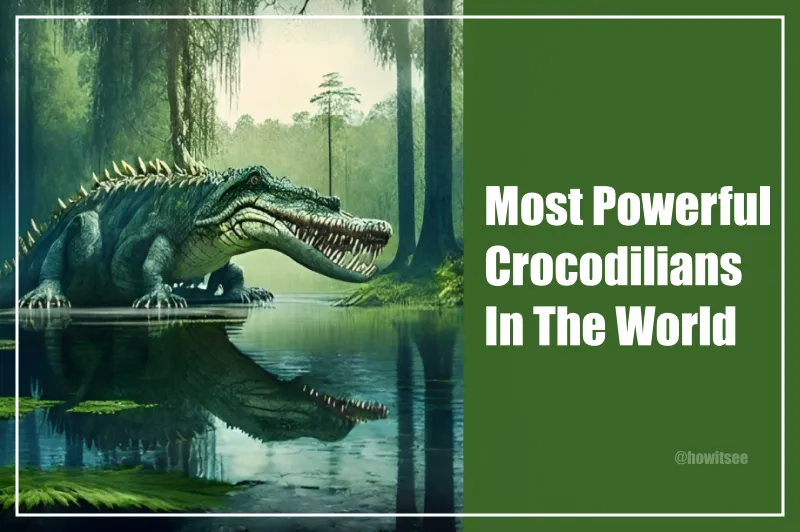Crocodilians are large carnivorous reptiles that are among the most lethal hunters on the planet. Their attack skills, bite force, and size place them as apex predators in every habitat they inhabit.
Despite the fact that all crocodiles are skilled predators, they are not all equally aggressive and dangerous. Some species are more ferocious than others and will attack without hesitation. Now let’s find out together which are the 10 most powerful crocodilians on our planet!
10 Most Powerful Crocodilians In The World
10) Cuban Crocodile
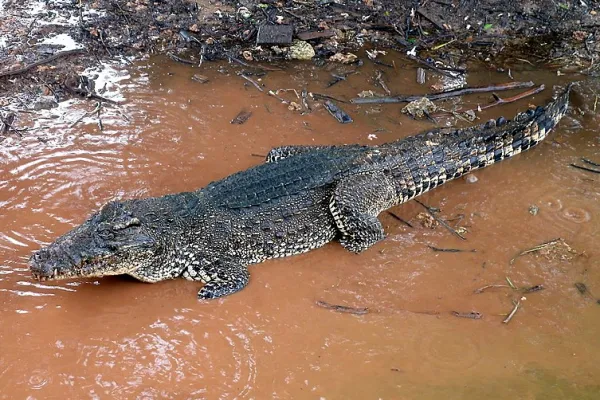
The Cuban crocodile, as the names suggest, is a species that is only found in Cuba. It lives in freshwater environments such as lakes, rivers, and swamps. The male Cuban crocodile can reach 11 feet (3.3 meters) and 474 pounds (215 kg).
They’re fast swimmers who can reach speeds of up to 20 mph (32 kph) in the water. Their long, strong limbs with reduced webbing allow them to move quickly on land. Cuban crocodiles, like all other species, are carnivores that feed on a variety of animals.
Despite their medium size, Cuban crocodiles are extremely aggressive and dangerous. However, due to their ferocious personalities, throughout history, only one attack by Cuban crocodiles resulted in human death, an older adult was killed in 1995 while spearfishing. Despite their numerous teeth, these crocs do not hunt large prey.
9) False Gharial
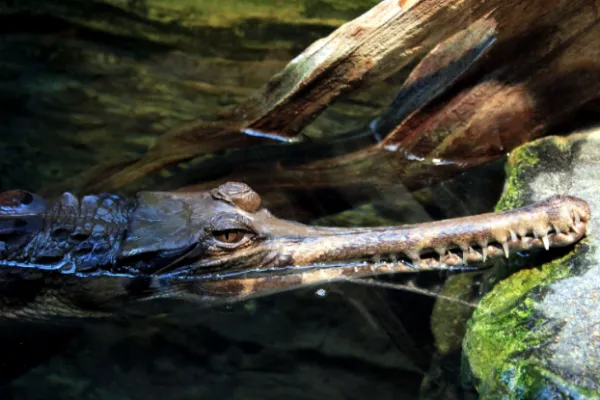
The false gharial, also known as the Malayan gharial and the Sunda gharial, is a freshwater crocodilian in the family of Gavialidae. It is native to Peninsular Malaysia, Borneo, Sumatra, and Java.
Unlike the gharial, the snout of the false gharial broadens significantly towards the base, making it more similar to that of true crocodiles than the gharial, whose osteology indicates a distinct lineage from all other living crocodilians.
These reptiles can reach a length between 13 – 16 feet long (3.9 – 4.9 m) with an average weight between 200 – 460 lbs (90 – 208 kg). This species is solitary and active at all hours of the day and night.
The majority of its time is spent submerged in mud holes or shallow wallows, with only its eyes and nostrils visible. Basking behavior, though not often observed, is probably used to aid thermoregulation.
8) Mugger Crocodile
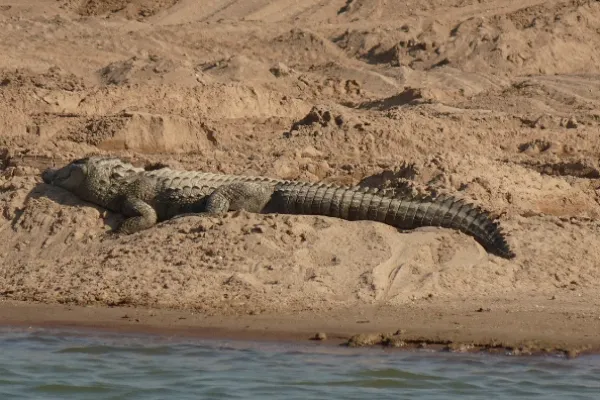
The Indian subcontinent and other nations are home to mugger crocodiles, sometimes referred to as marsh or Indus crocodiles. They inhabit rivers, marshes, and freshwater lakes and are distinguished by their large snouts.
Muggers are medium-sized crocodiles. Large individuals can grow 16 feet (4.87 m) in length, weighing up to 1,540 pounds (700 kg). The diet of the muggers changes with age.
The typical diet of juvenile crocodiles includes crustaceans, fish, and frogs, whereas that of adults includes larger creatures like deer and buffaloes.
Muggers make use of their keen sense of smell, amazing swimming abilities, and excellent vision to locate their prey. Because of their enormous 2,500 PSI biting force, muggers are also incredibly deadly crocodiles.
7) Gharial

India and Nepal are home to the gharial, also known as the Indian gavial, Indian gharial, long-nosed crocodile, or fish-eating crocodile. They live in calm, deep, swift rivers and are typically more suited to life in the water than on land.
Adult male gharials range in length from as long as 16 – 20 feet (4.8 – 6 m). Regarding their weights, gharials vary in weight from 350 to 400 pounds (158 – 181 kg). Adult gharials are more fish eaters.
Their teeth, snouts, and thin jaws are well suited for quick lateral underwater snatching motions and grasping onto agitating prey like slippery fishes. Since they are the most aquatic crocodile species, they are neither quick nor agile movers.
However, gharials have a deadly biting force and may utilize this strong weapon to harm humans if they feel threatened or under attack.
6) American Crocodile
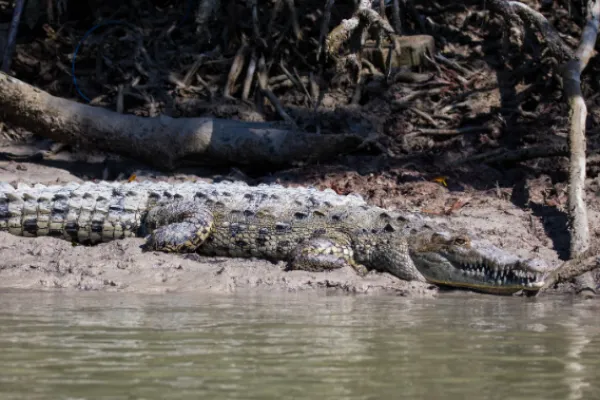
The American alligator is a species native to North America. They can be found all throughout, from the North Carolina tidal areas to as far south as the counties of Florida and as far west as central Texas.
Additionally, Georgia, Mississippi, Louisiana, Alabama, Arkansas, etc. are home to these predators. They usually live in freshwater, and they can’t tolerate much salt. American alligators are enormous.
Male adults can grow to be 11 to 15 feet (3.3 to 4.5 m) long and weigh up to 1,230 pounds (557 kg). They are apex predators, sitting at the very top of the food chain.
An American alligator will usually attack humans only because it mistakes identity for that of some other animal. For this reason, American alligator attacks on humans do not happen as often.
5) Black Caiman
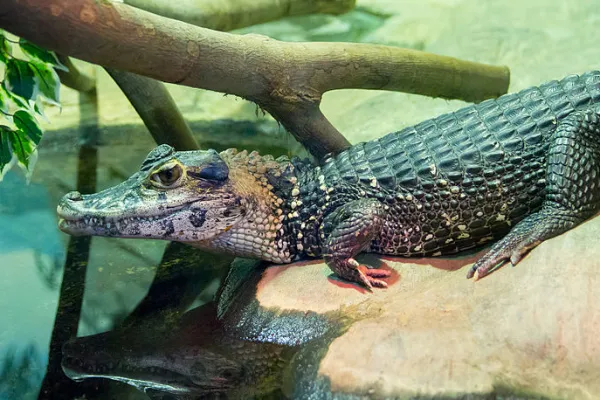
The black caiman is the largest animal in the Amazon Basin and also one of the most dangerous crocodiles there. They live in South America’s northern and central regions. Male adult black caiman length can reach 20 feet (6 m).
This places them as the third-largest species of crocodile in the Neotropics. These crocodiles typically weigh about 800 pounds (362 kg), although they can weigh up to 1,300 pounds (590 kg).
Black caimans have diverse food and can prey on large animals such as horses, pythons, monkeys, deer, bears, otters, armadillos, etc. because of their immense power. They hunt at night and have keen hearing, excellent vision, and dark armored skin that serves as camouflage.
Despite being strong creatures, no one has ever measured the bite force of a black caiman. Black caimans are lethal crocodilians with enormous physical strength, yet they do not eat people and often only attack when provoked or in self-defense.
4) American Alligator
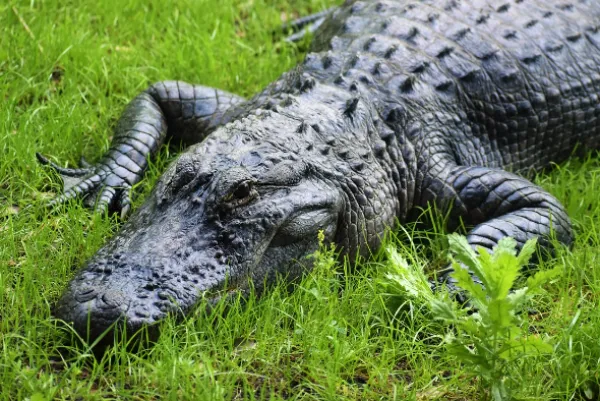
The Central American alligator, another name for the American crocodile, can be found in a variety of aquatic habitats from southern Florida and Mexico south through the Caribbean islands and Central America to northern South America.
It has been seen in estuaries with brackish water; therefore, it is not unfamiliar with saline environments. However, adult males can grow up to as long as 20 feet (6 m) and weigh as much as 2,000 pounds (907 kg).
These crocodiles can hold onto victims until swallowing them whole because of their powerful jaws and their sharp, jagged, interlocking teeth. In addition, they have protective eyelids that enhance their night vision, which is useful for hunting while underwater.
In recent years, American crocodiles have attacked roughly 18 individuals annually, with about four of those attacks being deadly.
3) Orinoco Crocodile
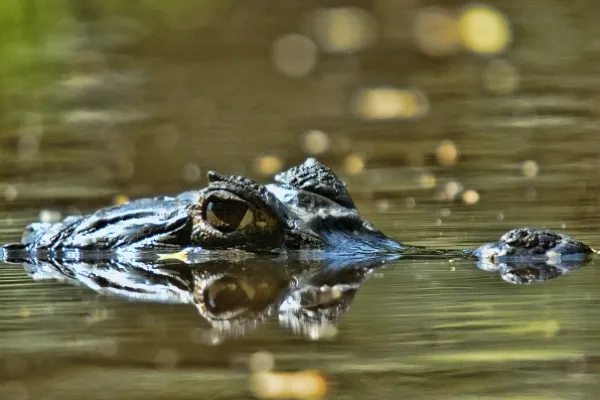
The Orinoco crocodile is a species that is at grave risk of extinction. It only lives in the Orinoco river basin in Colombia and Venezuela and has a relatively limited population.
It is one of the crocodile species that is most at risk of extinction since it was heavily killed for its skin in the 19th and 20th centuries.
This crocodilian species is exceptionally huge; males have been measured up to 22 feet (6.7 m) in the past, but they can now grow to sizes of up to 17 feet (5.1 m).
The coloration is light even in adults. The Orinoco crocodiles are social animals, living in a dominant hierarchy. These reptiles have a communication system with well-developed responses.
Usually, these crocodiles are very slow except with feeding. These reptiles can sometimes be extremely aggressive.
2) Nile Crocodile
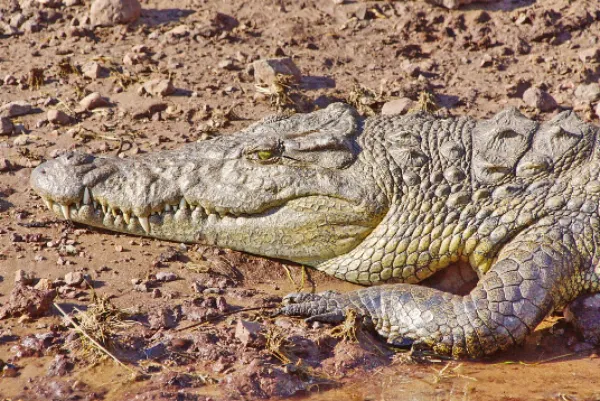
Most of the Nile crocodile’s habitat is in sub-Saharan Africa, where it can be found in rivers and marshes. It is considered the most dangerous African reptile. With up to 745 attacks on humans per year, data show that Nile crocodiles are the deadliest and most dangerous crocodiles in the world.
These aquatic monsters can grow up to 20 feet (6 m) and 1,700 pounds in weight (771 kg), making them the second-largest crocodile. The 3,700 PSI bite force of Nile crocodiles is their most remarkable strength.
These crocodiles can swim quickly, reaching speeds of 35 km/h (21 mph) in short bursts. The main method of hunting for Nile crocodiles is an ambush.
Nile crocodiles pull their prey back into the water when they catch it, where they drown it before consuming it whole. These strong crocodiles can camouflage in while hiding due to their dark olive to brown skin.
1) Saltwater Crocodile
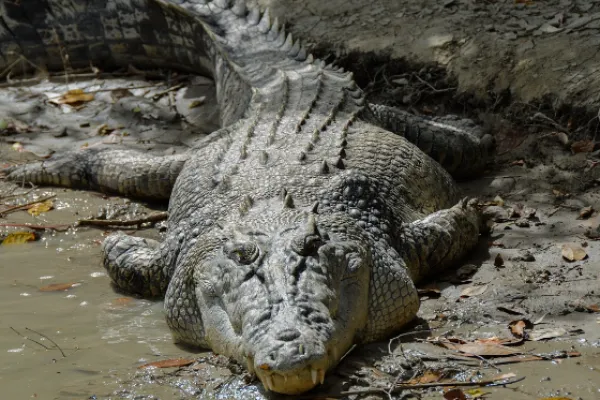
The largest living reptile in the world and the second-most deadly crocodile species on the globe is the saltwater crocodile. The estuarine crocodile, often known as the saltwater crocodile or “Saltie,” is a reptile that mostly inhabits Southeast Asia, from southern India to the northernmost point of Australia.
Despite its name, saltwater crocodiles are not just found in saltwater environments. They are also found in brackish waters and freshwater streams and swamps. Large male individuals can grow up to 20 feet (6 m) and 2,900 pounds (1,315 kg).
These giants lurk in the water, waiting for their prey to come into range before blasting into the attack. Sharks, amphibians, birds, and humans are among the many creatures that saltwater crocodiles hunt.
Saltwater crocodiles have the same 3,700 PSI biting force as Nile crocodiles, which is strong enough to shatter a bowling ball. In addition, these croc species swim as fast as 18 mph (29 kph) in short bursts. When they’re not hunting for food, these reptiles fight over territories.
Here, we conclude our article. We hope you like our post.
Also Read:

Meet Abhidept (nickname Monty), the visionary founder of How It See, being an engineering student, he’s fueled by an insatiable curiosity about the world around him. He is captivated by an eclectic correlation between animal groups, science, and nature, and this fascination drives his quest for understanding.
After completing his degree, he’s set on a mission to delve deep into the realm of nature, accumulating knowledge to share with you through his writing. In the meantime, he loves to watch anime and read anime.
